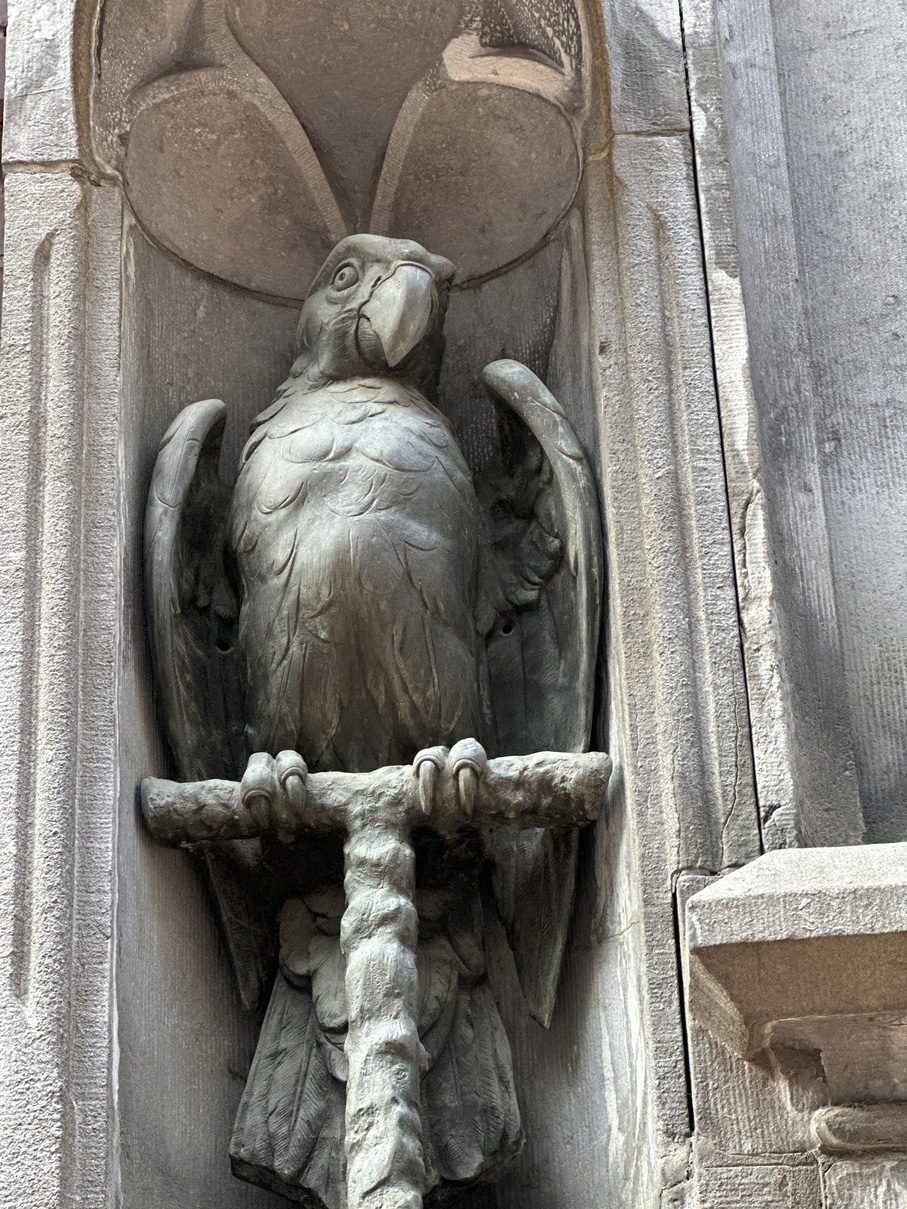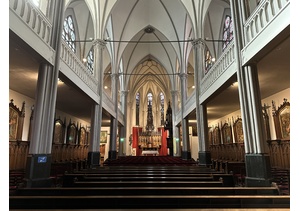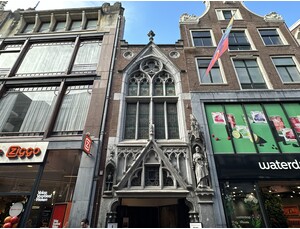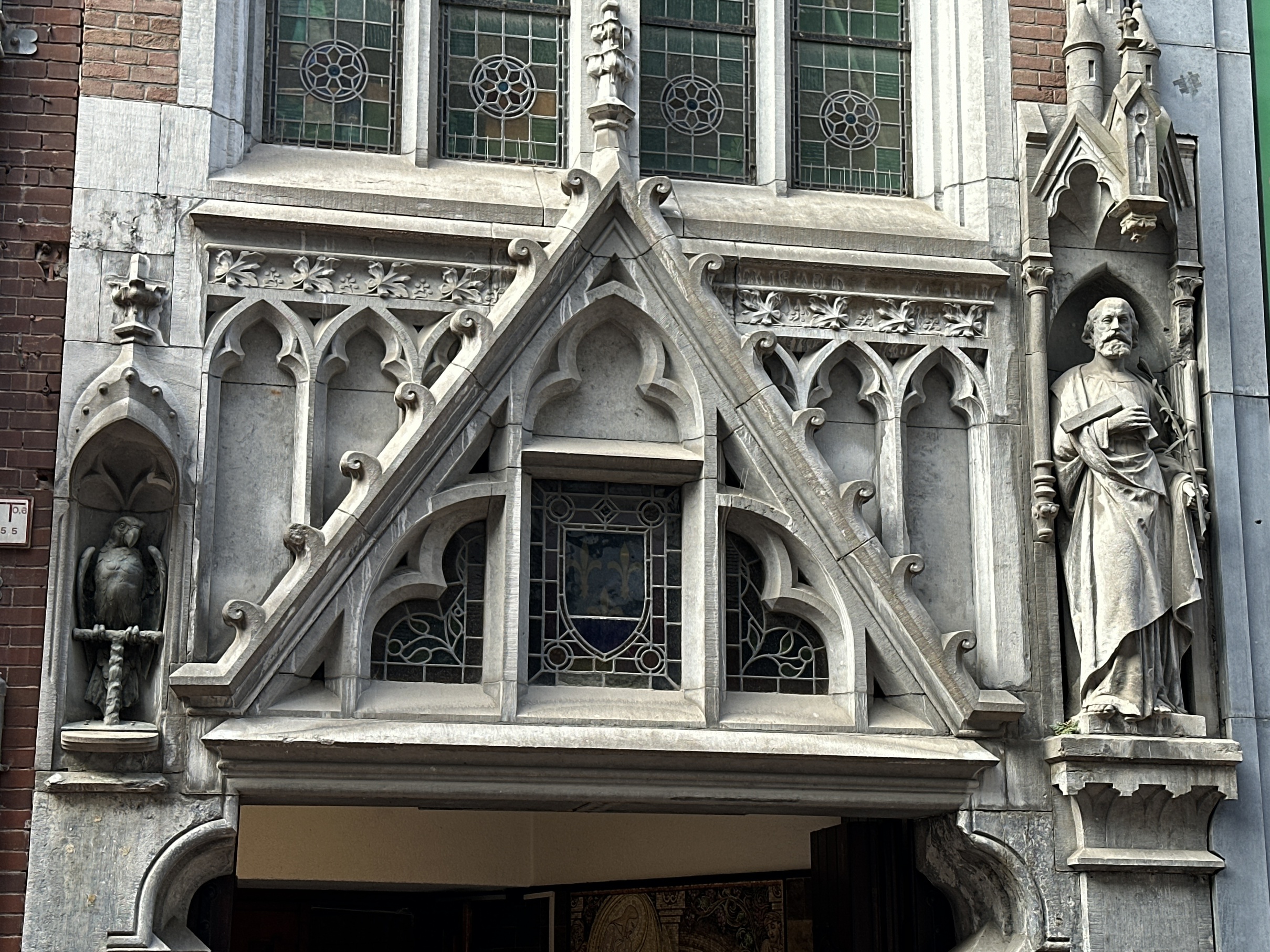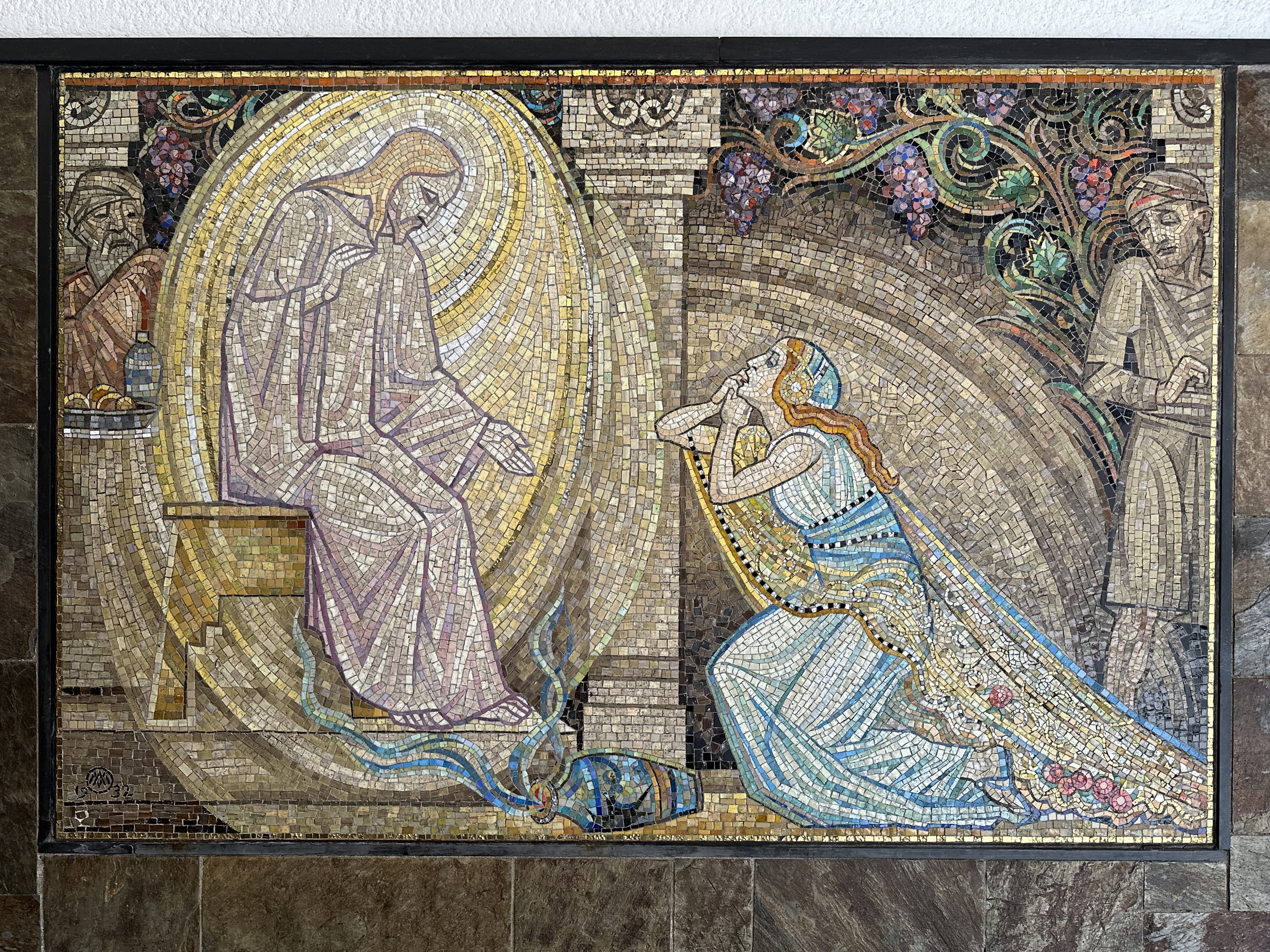The Kalverstraat is perhaps the best-known and busiest shopping street in the Netherlands. But amid all the shops with their flashy advertisements stands a narrow façade where nothing is for sale.
Location
De Papegaai (Saint Joseph Church)
Kalverstraat 58
Type
Church
Religious community
Roman Catholic Church
Object
Sculpture of a parrot
Maker and date
Van den Bossche en Crevels
1899
Visit
The sculpture is visible on the façade of the church
The doors of this narrow church building on the busy Kalverstraat are usually open during the day. It invites you to step inside. But first, let’s take a look at the façade. It is the Neo-Gothic entrance to a church that has stood here since the seventeenth century. At that time, there was a hidden church in the garden of a house called De Papegaai (“The Parrot”). That explains the curious name of the church. The façade was not recognizable as a church then, because Catholic churches were not allowed to be visible from the public street in Protestant Amsterdam.
We see the parrot depicted on the façade. It sits on a perch beneath its own canopy to the left of the entrance. On the right side, also beneath a canopy, stands Saint Joseph, the true namesake, to whom the church is dedicated. He can be recognized by his carpenter’s tools.
The bronze parrot was once stolen and replaced by a plastic version. A few years ago, the real parrot was returned. The circumstances of the theft have never been clarified.
hidden church
Building in which hidden religious services were held in the Dutch Republic (1588-1795). Christian denominations outside the Calvinist church, such as Catholics, Lutherans, Mennonites and Remonstrants, had to practice their religions in hidden churches.
Neo-Gothic style
The neo-gothic style is an architectural style that flourished between c. 1830-1910, reviving medieval Gothic architecture.
Let us now enter the porch, decorated with colorful mosaics. The largest one, on the right, depicts the penitent Mary Magdalene at the feet of Christ. In the Catholic tradition, she symbolizes the sinful person who repents, but the artist Antoon Molkenboer also meant her to represent the worldly woman shopping in the Kalverstraat.
With this message still in mind, we step into the church: through a revolving door and a vestibule we enter the interior. Many visitors are surprised by the vast space. You would never expect it behind that narrow façade! The use of oak for the furnishings and the deep red of the upholstery give the church a warm atmosphere. Open to everyone during the day, the church seems to call you to step away for a moment from the bustle of the busy shopping street.
Liduine Reuser
Last edited
September 30, 2025
Parrot, workshop Van den Bossche en Crevels and foundry H.F. Jansen & Sons, Amsterdam, 1899, bronze. Collection St. Nicholas Parish, Amsterdam.
Interior and exterior: photography Our Lord in the Attic Museum.
Façade of De Papegaai, workshop Van den Bossche en Crevels under the direction of architect A.C. Boerma, Amsterdam, 1899. Collection St. Nicholas Parish, Amsterdam.
Mary Magdalene kneeling before the Risen Christ, Antoon Molkenboer, 1932. Collection St. Nicholas Parish, Amsterdam.
Dael, Peter van, De Papegaai (Amsterdam 2007).
Dunk, T.H. von der, 'De bouw van de Papegaai: Amsterdams eerste neogotische katholieke kerk', Jaarboek Amstelodamum 97 (2005) 155-183.
Grijpink, P.M., 'De kerk van den H.Josef te Amsterdam', Bijdragen voor de Geschiedenis van het Bisdom van Haarlem 33 (1911) 271-313.
Hout, Guus van den en Robert Schillemans, Putti en cherubijntjes. Het religieuze werk van Jacob de Wit (Haarlem 1995).
Tepe, Wim, XXIV paepsche vergaderplaetsen (Amstelveen 1984).
Online sources
Website van De Papegaai
Last visited 22-09-2025


